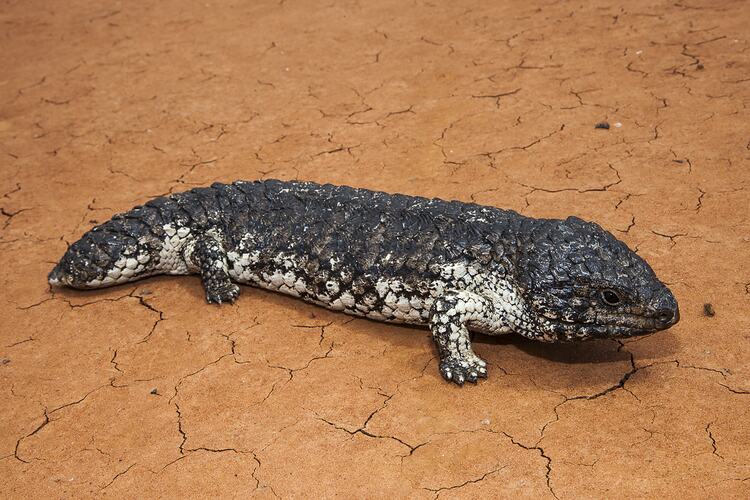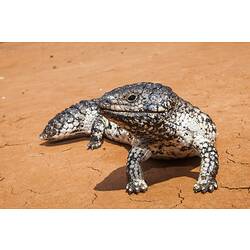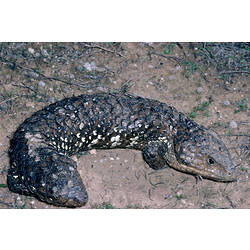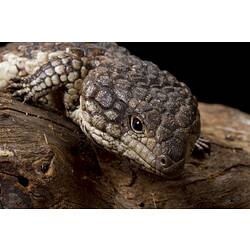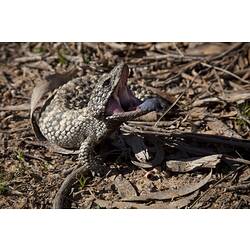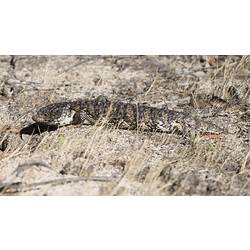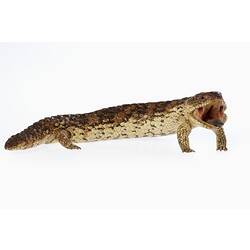General Description
Stout body with relatively short limbs. Scales large and rough like a pine cone, tail short and rounded, can be plain black, brown, reddish brown or speckled on back and whitish belly. Blue tongue. Up to 35 cm long (snout-vent).
Biology
Stumpy-tails look similar to Blue-tongue Lizards and are closely related to them. They are active during the day and omnivorous, but mainly eat flowers and vegetation. When threatened they will open their mouth, extend their toungue and hiss. Males and females pair bond, which has been recorded for ~20 years in wild animals. They are often seen in male-female pairs during the spring breeding season. Females usually give birth to two live young that together can weigh up to 40% of the mother's body weight.
Distribution
Dry to arid southern and eastern Australia.
Habitat
Mallee and dry forest areas.
More Information
-
Animal Type
-
Animal SubType
-
Brief Id
Large skink with solid body and large corregated scales, can be plain brown or speckled.
-
Colours
Black, Red-brown, White, Blue
-
Maximum Size
35 cm
-
Habitats
-
Diet
Omnivore
-
Diet Categories
Plants, Insects, Invertebrates
-
Hazards
Usually harmless, but can bite.
-
Endemicity
-
Commercial
No
-
Conservation Statuses
CITES: Not listed, FFG Threatened List: Not listed, EPBC Act 1999: Not listed, IUCN Red List: Least Concern
-
Taxon Name
-
Scientific Author
(Gray, 1825)
-
Common Name
Stumpy-tail Lizard
-
Other Names
Sleepy Lizard , Shingle-back Lizard , Bobtail
-
Kingdom
-
Phylum
-
Subphylum
-
Class
-
Subclass
-
Order
-
Suborder
-
Infraorder
-
Family
-
Genus
-
Species Name
rugosa
